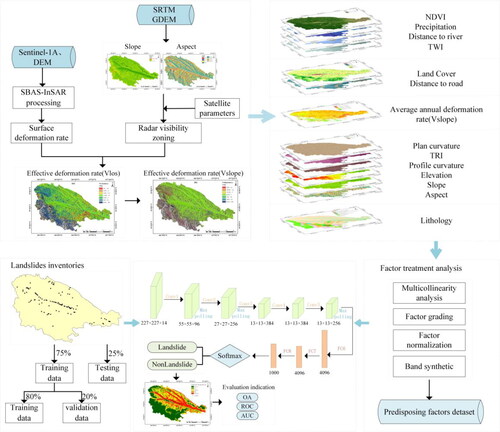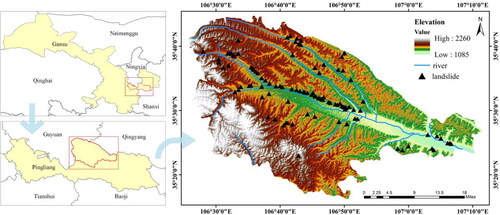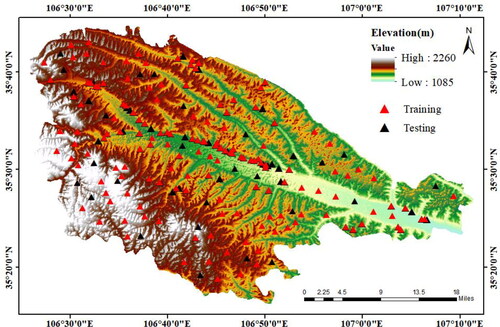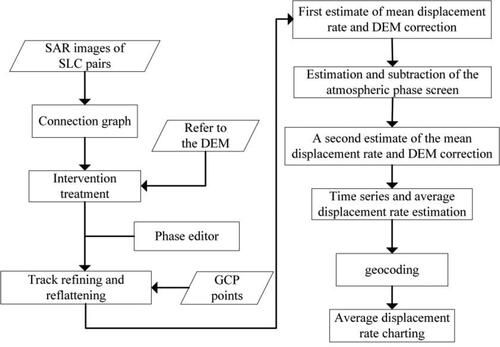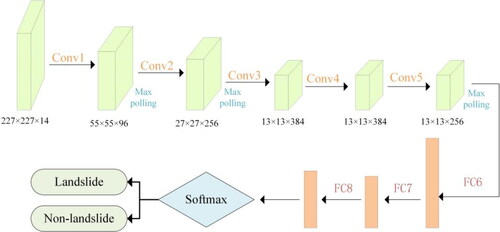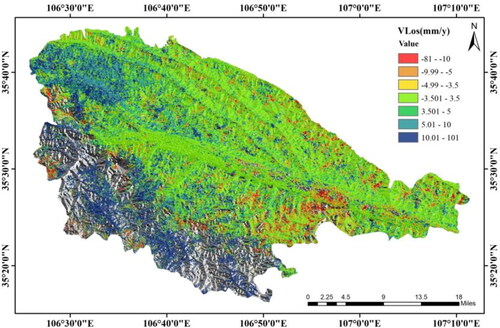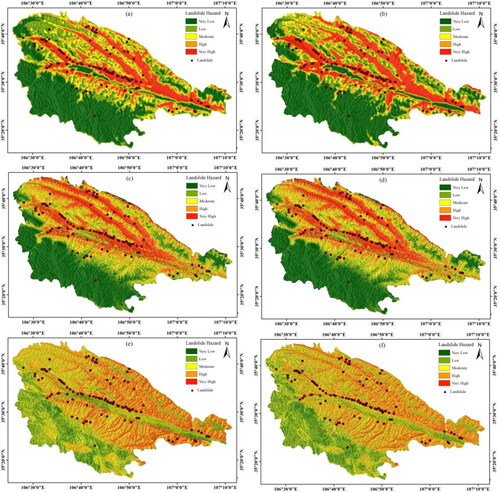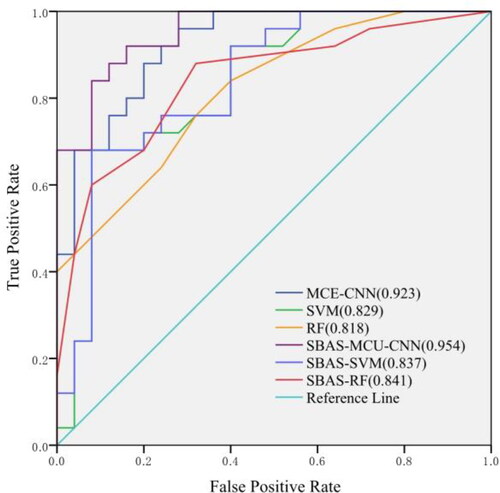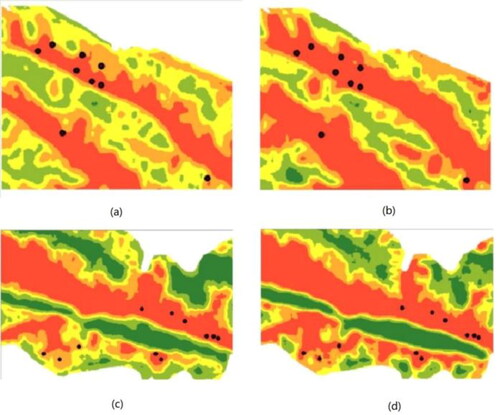Figures & data
Figure 3. Landslide sites in Kongtong District available online. (a) & (b) Baishui Town, July 11 2018 (https://www.sohu.com/a/241243234_681138); (c) Kongtong Town, July 27 2018 (https://mp.weixin.qq.com/s/rNpuW3930kZevN6LUDUZoA).
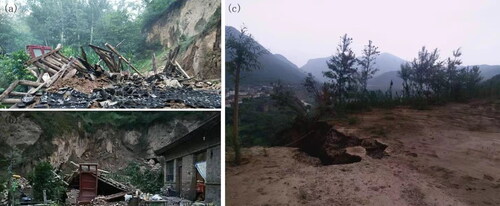
Table 1. Basic parameters of the Sentinel-1A images.
Figure 6. The ‘Dynamic and Static’ + ‘Internal and External’ factors in landslide hazard analysis system.
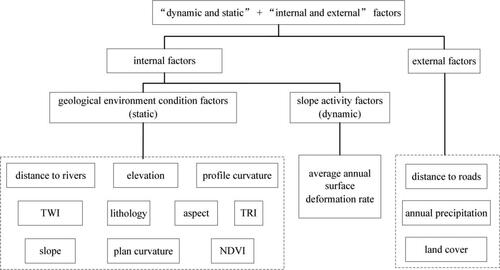
Figure 10. Landslide evaluation factors: (a) Elevation; (b) Aspect; (c) Slope; (d) Plan curvature; (e) Profile curvature; (f) TRI; (g) Lithology; (h) Distance to roads; (i) TWI; (j) Annual precipitation; (k) NDVI; (l) Land cover; (m) Distance to rivers; (n) Average annual deformation rate in slope direction.
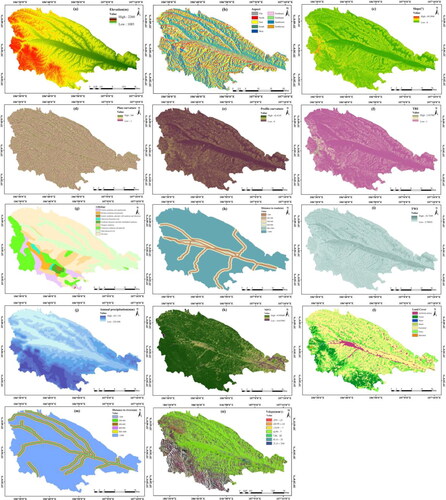
Table 2. Sources of factors.
Table 3. Multi-collinearity diagnostics for the variables used in this study.
Table 4. Comparison of OA values between different methods.
Table 5. Landslide zonal statistics.
Code availability
The code used during the current study are available from the corresponding author on reasonable request.

